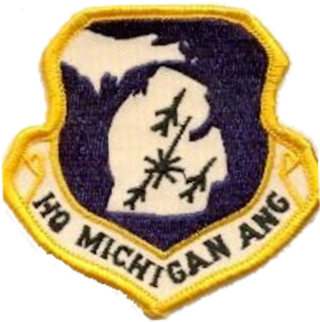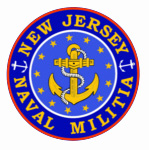
In the United States, state defense forces (SDFs) are military units that operate under the sole authority of a state government. State defense forces are authorized by state and federal law and are under the command of the governor of each state.
The Uniform Code of Military Justice (UCMJ) is the foundation of the system of military justice of the armed forces of the United States. The UCMJ was established by the United States Congress in accordance with their constitutional authority, per Article I Section 8 of the U.S. Constitution, which provides that "The Congress shall have Power. .. to make Rules for the Government and Regulation of the land and naval forces" of the United States.

The United States Department of the Navy (DON) is one of the three military departments within the Department of Defense of the United States of America. It was established by an Act of Congress on 30 April 1798, at the urging of Secretary of War James McHenry, to provide a government organizational structure to the United States Navy (USN); since 1834, it has exercised jurisdiction over the U.S. Marine Corps (USMC) and, during wartime, the U.S. Coast Guard (USCG), though each remains an independent service branch. It is led by the secretary of the Navy (SECNAV), a statutory civilian officer.

A naval militia is a reserve military organization administered under the authority of a state government in the United States. It is often composed of reservists of the Navy Reserve, Marine Corps Reserve, and Coast Guard Reserve, retirees and volunteers. They are distinguishable from the U.S. Coast Guard Auxiliary which is a federally chartered civilian volunteer component of the U.S. Coast Guard and falls under the command of the Commandant of the Coast Guard through the Chief Director of the Auxiliary, and the United States Maritime Service and United States Merchant Marine, both of which are federal maritime services.

The United States Navy Reserve (USNR), known as the United States Naval Reserve from 1915 to 2005, is the Reserve Component (RC) of the United States Navy. Members of the Navy Reserve, called Reservists, are categorized as being in either the Selected Reserve (SELRES), the Training and Administration of the Reserve (TAR), the Individual Ready Reserve (IRR), or the Retired Reserve.

The New York State Division of Military and Naval Affairs is responsible for the state's New York Army National Guard, New York Air National Guard, New York Guard and the New York Naval Militia. It is headed by Adjutant General of New York Major General Raymond F. Shields Jr., appointed on October 1, 2018. with the Governor of New York Kathy Hochul serving as Commander in Chief of the state's militia forces. It is part of the New York State Executive Department.
The Alaska Department of Military and Veterans Affairs manages military and veterans affairs for the government of Alaska. It comprises a number of subdepartments, including the Alaska National Guard, Veterans Affairs, the Division of Homeland Security and Emergency Management, Alaska Naval Militia, and others.

The Michigan Air National Guard is the aerial militia of the State of Michigan, United States of America. It is, along with the Michigan Army National Guard, an element of the Michigan National Guard. The Michigan Air National Guard is also an Air Reserve Component of the United States Air Force.

The New Jersey Naval Militia (NJNM) is the inactive naval militia of the state of New Jersey. As a portion of the New Jersey organized militia, it existed as an active entity from 1895 to 1963 and again from 1999 to 2002. The Naval Militia was deactivated by the state in 2002 due to a concerns about training, accession processes, security clearances, background checks, rank criteria, medical standards, physical fitness criteria, vessel fitness, and command qualifications.
The Florida Naval Militia was the official naval militia of the state of Florida. Naval militias were organized as naval parallels to the National Guard as dual federal and state obligations, with the naval militias normally being under state control but subject to federal activation. The Florida Naval Militia was active during three periods in Florida history: between 1897 and 1903; between 1911 and 1917; and between 1934 and 1941.

The South Carolina Naval Militia (SCNM) is the naval militia of the state of South Carolina. The SCNM is a naval unit organized at state level and primarily composed of Navy and Marine Corps reservists who serve simultaneously as federal and state level reservists. The SCNM can be deployed by the Governor of South Carolina to assist in emergency response or in homeland security operations.

The Wisconsin Naval Militia is the currently inactive naval militia of the state of Wisconsin. The Wisconsin Naval Militia served as a military reserve force for the state of Wisconsin, and was organized as a naval parallel to the Wisconsin National Guard.
The Indiana Naval Militia (INM) is the currently inactive naval militia of Indiana. Along with the Indiana National Guard and the Indiana Guard Reserve, the Indiana Naval Militia is a component of the military forces of Indiana. Like the members of the National Guard, the Navy Reserve and Marine Corps Reserve personnel who make up the membership of the various naval militias have a dual federal and state status, operating as a part of their state's military forces unless called into federal service, at which time they are relieved from their state obligations and placed under federal control until they are released from active service. However, unlike the National Guard, which is activated and deployed as an entire unit, naval militia personnel are activated as individuals and deployed within the ranks of their respective reserve components. Therefore, only members of the naval militia are activated under federal service, while the naval militia itself is never federalized as a unit.

The Michigan Naval Militia was founded in 1893. It is currently an unorganized naval militia of the U.S. state and is recognized as a component of the militia of Michigan. The Michigan Naval Militia, along with the Michigan National Guard and the Michigan Volunteer Defense Force, exists as one of the military components of Michigan's organized militia.

The North Carolina Naval Militia is the inactive naval militia of North Carolina. The naval militia, along with the North Carolina National Guard, the North Carolina State Defense Militia, and the historic military commands, is a component of the organized militia of North Carolina.
The Minnesota Naval Militia is the currently inactive naval militia of Minnesota. As a naval militia, the Minnesota Naval Militia served as a Navy and Marine Corps parallel to the National Guard, where, like the soldiers of the Army National Guard and the airmen of the Air National Guard, sailors and marines could serve in a dual federal and state role as state military forces answerable to the governor, unless federalized and deployed by the federal government. The naval militia served as an active component of the organized militia from 1903 until the end of World War II.
The Missouri Naval Militia is the currently unorganized naval militia of Missouri. Along with the Missouri Army National Guard, the Missouri Air National Guard, and the Missouri State Defense Force, the Missouri Naval is recognized under Missouri law as part of the organized militia of Missouri. Like the members of the National Guard, members of the naval militia who also serve in the Navy Reserve and Marine Corps Reserve have a dual federal and state status, serving as members of the naval militia under authority of the state government until they are called into federal service, at which time they are relieved from their state obligations and placed under federal control for the duration of their federal deployment.
The Maryland Naval Militia is the authorized but currently inactive unorganized naval militia of Maryland. It served as a dual federal and state military reserve force, essentially a naval and marine equivalent of the Maryland Army National Guard and the Maryland Air National Guard.
The Louisiana Naval Militia is the currently unorganized naval militia of Louisiana, United States. It was organized as a naval military reserve force, serving as naval parallel to the Louisiana National Guard.

The Florida Department of Military Affairs is a state agency of the state of Florida, which was created by Chapter 250, Florida Statutes. The department is responsible for providing management oversight and administrative support to the Florida National Guard. The two branches of the Florida National Guard, the Florida Army National Guard and the Florida Air National Guard, fall under the command of the state Adjutant General, an appointee of the Governor of Florida, and fall under the command of the Governor of Florida.













